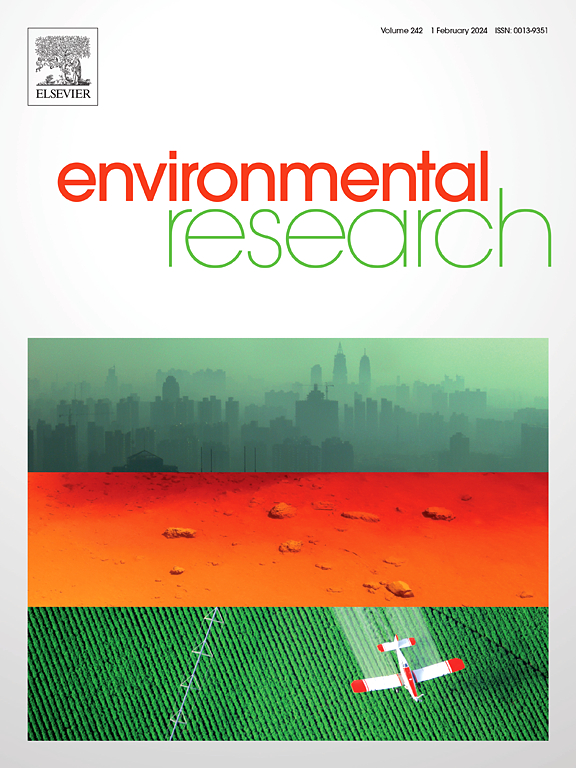在水质和超声调节下纳米气泡增强O3氧化:性能和降解效率的系统综述
IF 7.7
2区 环境科学与生态学
Q1 ENVIRONMENTAL SCIENCES
引用次数: 0
摘要
纳米气泡由于其独特的物理化学性质而受到越来越多的关注。然而,现有的关于NBs的综述主要集中在它们的性质、生成方法和应用上,而很少强调它们与臭氧(O3)的集成。为了解决这一差距,本文特别关注O3 nb。首先,综述了现有研究报道的O3 NBs生成和检测装置的原理和参数,比较了不同制备方法制备的NBs性质的差异。此外,系统地比较了O3 NBs与常规O3大气泡的理化性质和污染物降解效率。此外,本文还研究了水质(如pH值、温度、盐度)和超声波调节(功率和频率)对三个关键方面的影响:(1)NBs行为,(2)O3 NBs性质,(3)污染物降解效率。此外,本文还讨论了上述相关文献中的争论点:(1)。高碱性条件下O3与NBs稳定性的矛盾(2). 水电离与布朗运动在维持NBs稳定性中的冲突(3). NaCl浓度对降解过程的影响尚不清楚。(4)兆兆超声频率调制的NBs生成。本文构建了O3 NBs应用于有机污染物降解的补强理论体系,不仅从御氧的理化性质层面分析了补强过程,而且为O3 NBs的制备提供了理论指导,为开发高效氧NBs氧化技术提供了重要的理论基础。本文章由计算机程序翻译,如有差异,请以英文原文为准。
Nanobubble-enhanced O3 oxidation under water quality and ultrasound regulation: a systematic review of properties and degradation efficiency
Nanobubbles (NBs), due to their unique physicochemical properties, have garnered increasing attention. However, existing reviews on NBs predominantly focus on their properties, generation methods, and applications, with limited emphasis on their integration with ozone(O3). To address this gap, this review focuses specifically on O3 NBs. Firstly,the review summarizes the principles and parameters of O3 NBs generation and detection devices reported in existing studies, and compared the differences between the properties of NBs produced by different preparation methods. Furthermore, it systematically compares the physicochemical properties and pollutant degradation efficiency of O3 NBs versus conventional O3 macrobubbles. Additionally, the review examines the effects of water quality (e.g., pH, temperature, salinity) and ultrasound regulation (power and frequency) on three key aspects: (1) NBs behavior, (2) O3 NBs properties, and (3) pollutant degradation efficiency. In addition, points of contention in the relevant literature regarding the above are discussed:(1). Contradiction between O3 and NBs stability under high alkaline conditions; (2). Conflict between water ionization and Brownian motion in maintaining the stability of NBs; (3). Unclear role of NaCl concentration on the degradation process. (4) Mega ultrasonic frequency modulation of NBs generation. This review constructs a reinforcement theory system of O3 NBs applied to organic pollutants degradation, not only analyzing the reinforcement process from the level of the physical and chemical properties of royal oxygen, but also providing theoretical guidance on the preparation of O3 NBs, which is an important theoretical basis for the development of high-efficiency oxygen NBs oxidation technology.
求助全文
通过发布文献求助,成功后即可免费获取论文全文。
去求助
来源期刊

Environmental Research
环境科学-公共卫生、环境卫生与职业卫生
CiteScore
12.60
自引率
8.40%
发文量
2480
审稿时长
4.7 months
期刊介绍:
The Environmental Research journal presents a broad range of interdisciplinary research, focused on addressing worldwide environmental concerns and featuring innovative findings. Our publication strives to explore relevant anthropogenic issues across various environmental sectors, showcasing practical applications in real-life settings.
 求助内容:
求助内容: 应助结果提醒方式:
应助结果提醒方式:


